You’ve seen the headlines: “Worker dies after industrial accident” or “1 killed, 1 injured in construction accident”.
But, beyond the shock value, what do these stories really tell you?
Do they answer the question as to why these accidents are happening, such as employee impairment? More importantly, actions you can take to prevent them, such as drug testing?
Starting today, that story can change.
Join us as we take a deep dive into the world of employee drug testing – providing real answers to questions of not only why you should test, but also how’s it’s done and beyond.
Why Do You Test?
It should come as no surprise that alcohol and drug abuse creates significant safety and health hazards.
At a cost of $100 billion each year, U.S. businesses are left holding the bag when it comes to abuse in the workplace, according to a report from the National Clearinghouse for Alcohol and Drug Information (NCADI).
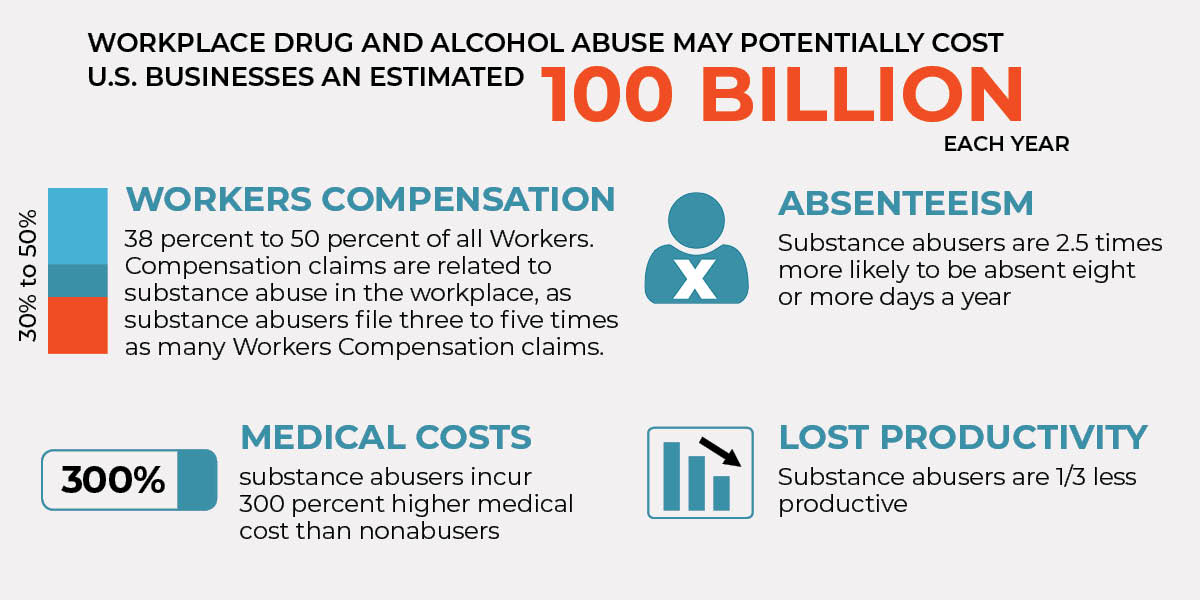
- Workers Compensation: 38 percent to 50 percent of all Workers Compensation claims are related to substance abuse in the workplace. Substance abusers file 3-5 times as many Workers Compensation claims.
- Medical Costs: Substance abusers incur 300 percent higher medical costs than non-abusers.
- Absenteeism: Substance abusers are 2.5 times more likely to be absent eight or more days a year.
- Lost Productivity: Substance abusers are 1/3 less productive.
But when looking at implementing a drug/alcohol program, it is usually done for at least one of the 7 most common reasons:
- Deter employees from using drug and alcohol
- Prevent hiring candidates who use illegal drugs
- Provide a safe work environment for all employees
- Be able to identify early and appropriately refer employees who have drug and/or alcohol problems for assistance
- Protect the public and instill consumer confidence that employees are working safely
- Comply with federal regulations
- Benefit from workers’ compensation premium discount programs
What Type of Testing is Right for You?
There are a variety of circumstances under which an organization may require testing. Such include:
Pre-Employment
“Pre” being the key term, applicants are required to pass drug testing as a condition of employment. Pre-employment testing is conducted to prevent hiring individuals who illegally use drugs. It typically takes place after a conditional offer of employment has been made.
Applicants agree to be tested as a condition of employment and are not hired if they fail to produce a negative test.
Workplace Example
Ted has applied for a Mechanic I position.
Following the interview process, it is determined Ted would be the most qualified candidate and is given a conditional offer of employment.
Prior to starting the position, Ted is required to have pre-employment drug testing completed. Once it is determined he has “passed” the pre-employment drug screen, the candidate is able to assume the new role of Mechanic I.
Reasonable Suspicion
Reasonable suspicion testing is similar to, and sometimes referred to, as “probable-cause” or “for-cause” testing and is conducted when supervisors document observable signs and symptoms that lead them to suspect drug use or a drug-free workplace policy violation.
Workplace Example
Take a look how James handled his employee’s suspicious behavior:
As Randy had returned to the warehouse to restock his delivery truck, James encountered him in the hallway.
“Something seems off,” he thought. He studied his behavior for a minute and noticed the employee’s bloodshot eyes and disoriented behavior.
Knowing these changes were not consistent with the employee’s typical appearance and behavior, James had a feeling Randy might have been working his shift under the influence of drugs or alcohol.
He immediately set up a test which confirmed his suspicion: Randy tested positive for marijuana.
It is extremely important to have clear, consistent definitions of what behavior or observations justify drug and alcohol testing. Since this type of testing is at the discretion of management, it requires careful, comprehensive supervisor training, utilizing the 5 step reasonable suspicion process.
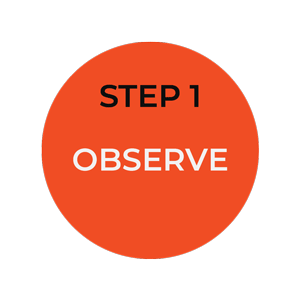
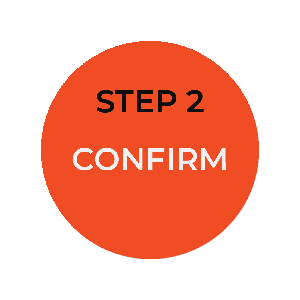
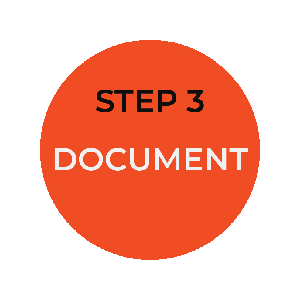
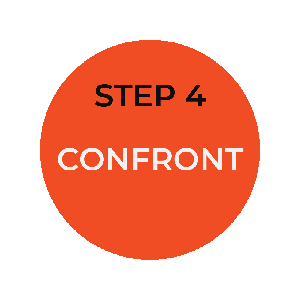
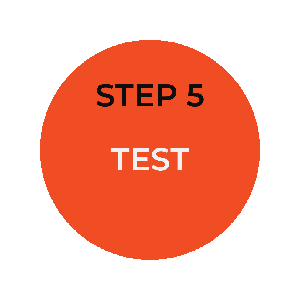
Step 1: Observe
You witness unusual characteristics or behaviors by an employee you supervise.
Step 2: Confirm
Confirm the employee’s behavior, appearance, speech or body odor is consistent with signs or symptoms of alcohol or drug impairment.
Step 3: Document
Objectively document your observations of the employee’s behavior, appearance, speech or body odor.
Step 4: Confront
Address your observations with the employee, explaining why you will require drug/alcohol testing.
Step 5: Test
Direct the employee to undergo testing and if off-site testing will be required, transport the employee for their safety.
Random
Contrary to what many people believe, the goal of random drug testing isn’t to “catch” employees using drugs.
Random testing is performed on an unannounced, unpredictable basis on employees whose identifying information (e.g., social security number or employee number) has been placed in a testing pool from which a scientifically arbitrary selection is made. This selection is usually computer generated to ensure that it is indeed random and that each person of the workforce population has an equal chance of being selected for testing, regardless of whether that person was recently tested or not.
Because this type of testing has no advance notice, it serves as a deterrent.
Workplace Example
- 100 employees
- Testing rate: 50%
- Quarterly selections – That means 50 random tests per year, so 12 or 13 each quarter.
At the end of each quarter, employee lists are updated and random selections are made utilizing specialized software.
The employer is provided a list of selections and a deadline to get them completed.
Periodic
Periodic testing is usually scheduled in advance and uniformly administered. Some employers use it on an annual basis, especially if physicals are required for the job. Such tests generally are more accepted by employees than unannounced tests, but employees can prepare them by stopping their drug use several days beforehand.
Workplace Example
Employer requires periodic drug testing to be completed when employees undergo an annual physical.
Therefore, on the anniversary of employment, the employee understands periodic drug testing will be required.
Post-Accident
Since property damage or personal injury may result from accidents, testing following an accident can help determine whether drugs and/or alcohol were a factor. It is important to establish objective criteria that will trigger a post-accident test and how and by whom they will be determined and documented.
Examples of criteria used by employers include: fatalities; injuries that require anyone to be removed from the scene for medical care; damage to vehicles or property above a specified monetary amount; and citations issued by the police.
Employers need to have guidelines to specify how soon following an accident testing must occur so results are relevant. Substances remain in a person’s system for various amounts of time, and it is usually recommended that post-accident testing be done within 8 hours for alcohol testing and 32 hours for drug testing.
Some employers expand the test trigger to incidents even if an accident or injury was averted and hence use term “post-incident.”
Workplace Example
Kevin is injured in a motor vehicle accident while driving a company issued vehicle.
Per company policy, post-accident testing is required.
The employee is therefore required to have post-accident alcohol testing, as soon as possible but within 8 hours of the time of accident along with post-accident drug testing, as soon as possible but within 32 hours of the accident.
Return-to-Duty
Return-to-duty testing involves a one-time, announced test. This is typically done for two scenarios:
- When an employee has been absent for an extended period of time.
- When an employee who has tested positive has completed the required treatment for substance abuse and is ready to return to the workplace.
Workplace Example
Raymond has been out of work for 6 weeks following a personal medical condition.
Prior to be allowed to return to work, he is required to have return-to-duty testing completed.
Upon receipt of a negative result, Raymond is cleared to return to regular duties.
Follow-Up
Follow-up testing or post-rehabilitation testing is conducted periodically after an employee returns to the workplace upon completing rehabilitation for a drug or alcohol problem. It is administered on an unannounced, unpredictable basis for a period of time specified in the drug-free workplace policy.
Workplace Example
Jamie has returned to work following rehabilitation.
As per company policy, Jamie is subject to periodic drug/alcohol testing to verify compliance with the established drug-free workplace policy.
The Many Methods of Testing
Ask someone what method of drug/alcohol testing is required and you are sure to get a variety of answers.
DRUG TESTING METHODS






Perhaps you are familiar with the two primary methods of drug and alcohol testing:
1. Urine
Results of a urine test show the presence or absence of drug metabolites in a person’s urine. Metabolites are drug residues that remain in the body for some time after the effects of a drug have worn off. It is important to note that a positive urine test does not necessarily mean a person was under the influence of drugs at the time of the test.
Rather, it detects and measures use of a particular drug within the previous few days and has become the defacto evidence of current use.
Because alcohol passes rapidly through the system, urine tests must be conducted very quickly after alcohol consumption in order to ensure any degree of accuracy.
For this reason, urine tests are generally not helpful in detecting alcohol use as opposed to illicit and prescription drug use, which is more easily traced in urine.
2. Breath
A breath-alcohol test is the most common test for finding out how much alcohol is currently in the blood.
The person being tested blows into a breath-alcohol device, and the results are given as a number, known as the Blood Alcohol Concentration (BAC), which shows the level of alcohol in the blood at the time the test was taken. BAC levels have been correlated with impairment, and the legal limit of 0.08 for driving has been set in all states.
Under DOT regulations, a BAC of 0.02 is high enough to stop someone from performing a safety-sensitive task for a specific amount of time (usually between 8 and 24 hours) and a BAC reading of 0.04 or higher is considered to be a positive drug test and requires immediate removal from safety-sensitive functions.
Under DOT regulations, a person who tests at the 0.04 BAC level may not resume job duties until a specific return-to-duty process has been successfully completed.
What Alternative Ways Can Drug Use Be Detected?
Who knew breath and urine samples aren’t the only way you can test your employees drug use?
Here’s 4 more!
1. Blood: A blood test measures the actual amount of alcohol or other drugs in the blood at the time of the test.
Blood samples provide an accurate measure of the physiologically active drug present in a person at the time the sample is drawn.
Although blood samples are a better indicator of recent consumption than urine samples, there is a lack of published data correlating blood levels for drugs and impairment with the same degree of certainty that has been established for alcohol.
In cases of serious injury or death as the result of an accident, the only way to determine legal intoxication is through a blood specimen. There is also a very short detection period, as most drugs are quickly cleared from the blood and deposited into the urine.
2. Hair: Analysis of hair provides a much longer “testing window,” giving a more complete drug-use history going back as far as 90 days. Like urine testing, hair testing does not provide evidence of current impairment, but rather only past use of a specific drug. Hair testing cannot be used to detect for alcohol use. Hair testing is the least invasive form of drug testing, therefore privacy issues are decreased.
3. Oral Fluids. Saliva, or oral fluids, collected from the mouth also can be used to detect traces of drugs and alcohol.
Oral fluids are easy to collect (a swab of the inner cheek is the most common collection method), harder to adulterate or substitute, and may be better at detecting specific substances, including marijuana, cocaine and amphetamines/methamphetamines.
Because drugs do not remain in oral fluids as long as they do in urine, this method shows promise in determining current use and impairment.
4. Sweat: Another type of drug test consists of a skin patch that measures drugs in sweat.
The patch, which looks like a large adhesive bandage, is applied to the skin and worn for some length of time.
A gas-permeable membrane on the patch protects the tested area from dirt and other contaminants.
Although relatively easy to administer, this method has not been widely used in workplaces.
Drug Testing Panels – What They Are & What They Detect
If you have ever been responsible for drug testing, you have likely been asked about the type of panel that is required.
The term “panel” simply refers to a drug or family of drugs included in a drug test. The more panels a test includes, the greater the scope of the test.
While drug panels can be customized, most organizations stick with the standard tests: 5-panel, 6-panel, 7-panel, 8-panel, 9-panel, 10-panel, and 12-panel.
5-Panel Drug Test
- The most cost-effective option in the workplace
- Used by the Department of Transportation (DOT) for safety-sensitive positions that are regulated by DOT agencies (FMCSA, FAA, USCG, PRA, PHMSA, FTA)
- Tests for marijuana, opiates, PCP, cocaine, and amphetamines
6-Panel Drug Test
- Tests for marijuana, opiates, cocaine, amphetamines, methamphetamines, and benzodiazepines
7-Panel Drug Test
- Tests for marijuana, opiates, PCP, cocaine, amphetamines, benzodiazepines, and barbiturates
8-Panel Drug Test
- Tests for marijuana, opiates, PCP, cocaine, amphetamines, methamphetamines, benzodiazepines, and barbiturates
9-Panel Drug Test
- Tests for marijuana, opiates, PCP, cocaine, amphetamines, methamphetamines, benzodiazepines, barbiturates, and methadone
10-Panel Drug Test
- Tests for marijuana, opiates, PCP, cocaine, amphetamines, benzodiazepines, barbiturates, methadone, methaqualone, and propoxyphene
12-Panel Drug Test
- The most comprehensive test, as it can test for extended opiates and the misuse of prescription painkillers
- Tests for marijuana, opiates, PCP, cocaine, amphetamines, benzodiazepines, barbiturates, methadone, methaqualone, propoxyphene, ecstasy, and oxycodone
When selecting the drug panel test that best fits your company’s needs, you will want to consider the industry, any applicable laws within your industry, and your corporate culture.
Understanding Detection Windows
While it may not be wise to publicize to employees the amount of time after ingestion during which evidence of drug use can be detected, it is important to understand detection limitations.
For example, alcohol is absorbed and eliminated more quickly than other drugs.
This is why post-accident testing procedures often require testing for alcohol to occur within two hours, when possible, but not exceeding 8 hours following an accident.
Other drugs are eliminated from the system at different rates and therefore detectable for different periods of time, often long after the drug’s effect has worn off.
Wondering how long other drugs are detectable?
Check out these estimates:
- Amphetamines – 48 hours
- Barbiturates – 2-10 days
- Benzodiazepines – 2-3 weeks
- Cocaine – 2-10 days
- Heroin Metabolite – less than 1 day
- Morphine – 2-3 days
- LSD – 8 hours
- Marijuana – casual use, 3-4 days; chronic use, several weeks
- Methamphetamine – 2-3 days
- Methadone – 2-3 days
- Phencyclidine (PCP) – 1 week
Keep in mind, other than the breath alcohol, drug testing does not determine impairment or current drug use. Rather, drug testing determines a specified amount or presence of a drug or its metabolite in urine, blood or an alternative specimen.
There is a minimum measurement applied to drug testing so that only traces of a drug or its metabolite above a specified level is reported as positive.
This measure is known as a “cut-off level,” and it varies for each drug. Setting cut-off levels involves understanding the expected results of testing and determining the needs of the employer’s drug-free workplace program.
Making Drug Testing Work for You
Detection is you’re protection!
If you’re looking to create a safer workplace, it starts with a strong occupational health program!
Drug testing can help to improve employee morale and productivity while decreasing:
- Absenteeism
- Accidents
- Downtime
- Turnover
- Theft
Because every business and workforce is unique, every employer should make a careful determination about the drug testing program elements that are most beneficial for their workplace.
At Axiom, Drug/Alcohol Programs are just one step in the employee health journey.
Whatever your need may be, we’re happy to guide your step!

Holly is an ER nurse by trade, but loves content marketing. She was born outside the box and believes everything is better with “sprinkles and sparkles”. She is passionate about impacting lives and uses marketing as her platform for sharing practical solutions to address real life occupational health challenges.
Find out more about our Injury Case Management services or our Occupational Health Programs.










